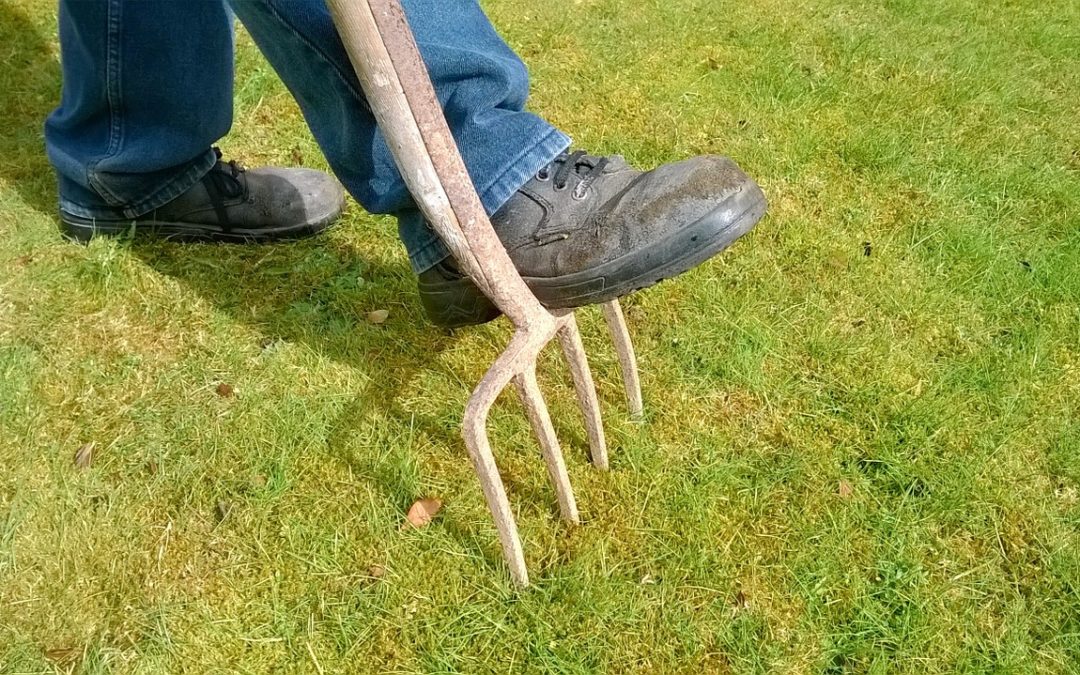Avoiding On-the-Job Injuries When Working Outdoors
The daily work of performing landscaping, horticultural, and lawncare services can cause a variety of short-term and long-term physical consequences. It goes with the territory. So, how can you incorporate ergonomics and lawncare safety into your individual or company yard service?
Causes of Injury When Landscaping
OSHA lists the following factors as the biggest causes of injuries when preparing and grading soil; planting trees, shrubs, and plants; and performing lawn and landscape maintenance, tree care, irrigation, and hardscape construction.
• Slips, trips, and falls
• Cuts and amputations
• Flying objects
• Electrical exposure
• Heat and cold stress
• Lifting and awkward postures
• Noise exposure
• Vehicle and equipment accidents, malfunction, improper use or carelessness
• Pesticide and chemical exposure
Why Prioritize Ergonomics and Lawncare Safety?
The typical lawncare worker spends day after day out in the field, usually in high heat. And these hours are spent pushing, lifting, and manipulating equipment, bending over, and repetitive motions. In addition, lawncare workers experience the vibration of lawnmowers, backpack leaf blowers, and other equipment. Plus, there’s always that errant tree root, difficult terrain, loud noise, working with chemicals, and more.
All of these activities can add up to a lot of aches and pains at the end of the day as well as injuries, short-term issues, and chronic pain conditions.
Good News about Ergonomic Equipment
The good news is that manufacturers have made strides over the past 10 to 15 years when it comes to ergonomic equipment. Riding lawnmowers come with better shock-absorbing seats. And equipment both held and carried are more ergonomically balanced. Still, equipment can malfunction, accidents happen, and people make mistakes.
The goal is to provide as safe a work environment as possible. Here are a few tips recommended by OSHA for both homeowners, landscape workers, horticulturalists, and lawncare business owners to help reduce repetitive injuries and strains.
16 Tips to Reduce Strain and Injuries
• Always use fresh fuel and change spark plugs when required. Keeping your equipment in top shape will reduce the number of pulls needed to start a motor.
• Wear padded gloves to reduce vibration exposure. You’d be surprised how much difference a little padding can make.
• Take breaks and hydrate often, especially when it’s hot outside. (NIOSH recommends 1 cup of water every 15 to 20 minutes.)
• Wear absorbent, open-weave clothing to permit air flow and allow you to move without constriction. Comfort is always an ergonomic factor.
• Train and certify all workers, drivers, and equipment operators.
• Wear boots with traction soles.
• Stay clear of blades and other rotating devices.
• Wear ear and eye protection.
• Wear protective gloves.
• Wear hard hats when in a drop zone.
• Inspect all equipment before and after use.
• Always keep the jobsite clean and litter free.
• Use safe lifting techniques.
• Locate all utility lines before working.
• Read and obey the MSDS (Material Safety Data Sheets) for any hazardous chemicals.
• Wear chaps and safety goggles and use proper tie-in when working in trees. Also, comply with the 10-foot power line clearance rule (10 feet + 4 inches for every 10kV over 50 kV). Note: Other Minimum Approach Distances (MADs) may be applicable for trained employees as provided by 29 CFR 1910.269.
Following these tips will help prevent accidents as well as diminish the risk from exposure and repetitive motion injuries.
Want to ensure your landscape workers are protected from on-the-job injuries?
Call McClure Ergonomics Consulting TODAY for your consultation!

